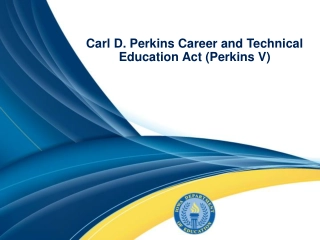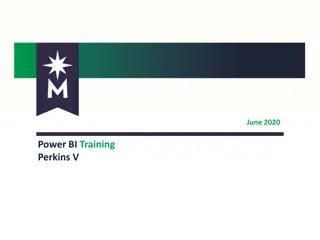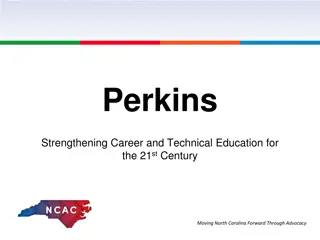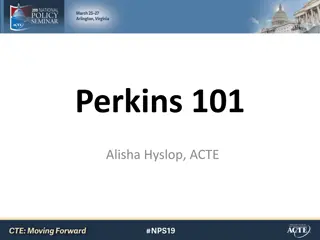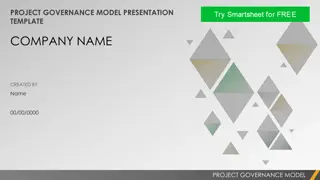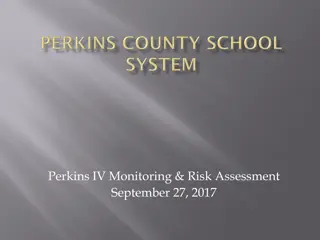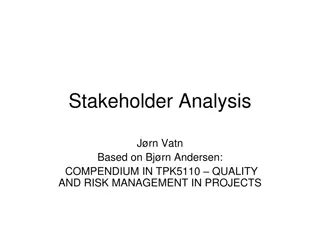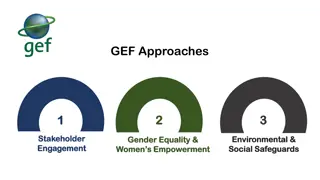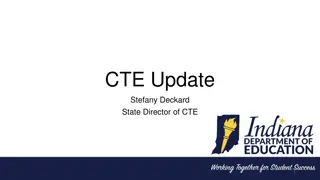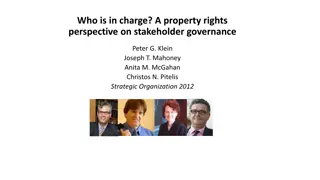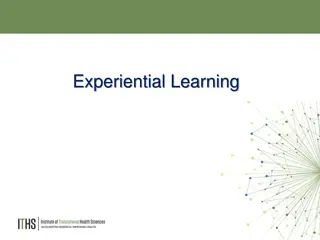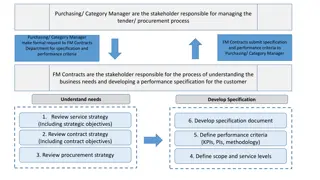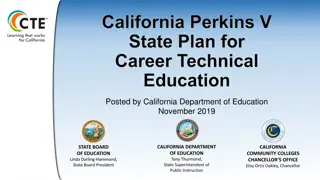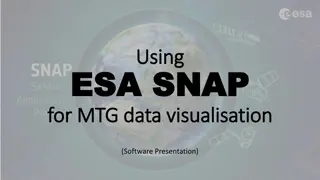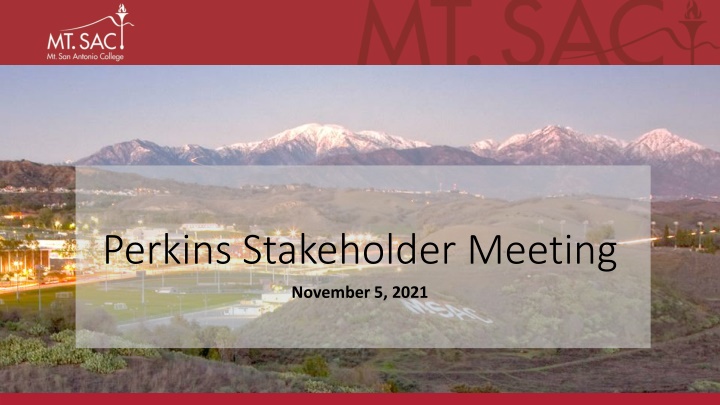
Stakeholder Meeting Agenda at Mt. SAC Perkins Grant - November 5, 2021
Explore the agenda for the upcoming Stakeholder Meeting at Mt. SAC Perkins Grant on November 5, 2021. Join us for discussions on Comprehensive Local Needs Assessment (CLNA), stakeholder involvement, and more to guide our Perkins funds investments.
Uploaded on | 0 Views
Download Presentation

Please find below an Image/Link to download the presentation.
The content on the website is provided AS IS for your information and personal use only. It may not be sold, licensed, or shared on other websites without obtaining consent from the author. If you encounter any issues during the download, it is possible that the publisher has removed the file from their server.
You are allowed to download the files provided on this website for personal or commercial use, subject to the condition that they are used lawfully. All files are the property of their respective owners.
The content on the website is provided AS IS for your information and personal use only. It may not be sold, licensed, or shared on other websites without obtaining consent from the author.
E N D
Presentation Transcript
Perkins Stakeholder Meeting November 5, 2021
Zoom Housekeeping Zoom Housekeeping There will be about 40 of us on this meeting, so we ask that you please: Keep yourself muted unless you are sharing or have a question Introduce yourself each time you talk Add your name and company/affiliation through the chat to allow us to create an attendee list after the meeting We will be tracking the chat for questions, but feel free to jump in and ask your questions as we go along There is a close captioning link in the Zoom toolbar We will be recording this meeting
Meeting Agenda Meeting Agenda Welcome and Introduction of Mt. SAC Perkins Grant Team State of the College Address: Jennifer Galbraith, Business Division Dean Meeting Overview: Joshua Christ and Dejah Swingle Stakeholder Group Purpose What is Perkins V Comprehensive Local Needs Assessment (CLNA) Breakdown of the 6 required Elements and Mt. SAC Performance Check-Ins with Industry, K12, Mt. SAC Faculty
Welcome and Introduction: Welcome and Introduction: Mt. SAC Perkins Grant Team Mt. SAC Perkins Grant Team Jennifer Galbraith, Business Division Dean Joshua Christ, CTE Faculty Liaison Dejah Swingle, Director, Career Education Carole Stevens, Perkins Grant Administrative Specialist IV Laurie Maas, Perkins Grant Administrative Specialist I Jacinta Jocson, Career Ed Project Specialist Marie Tyra, High School Articulation Project Expert
State of the College State of the College Jennifer Galbraith Dean, Business Division
Stakeholder Group Purpose Stakeholder Group Purpose Evidence of stakeholder involvement is a requirement of Perkins V The Stakeholder Group is an institution-level advisory, required biennially Provides input on elements of the Comprehensive Local Needs Assessment (CLNA) that guides the institutional Perkins plans Your input is important to guide our investments with Perkins funds
What is Perkins V? What is Perkins V? Perkins V is federal funding provided to K12 and community colleges to ensure all students can benefit from high-quality Career Education programs. Perkins V requires specific supports for unique demographic groups, referred to as special populations, and is intended to recruit and retain these groups in high-quality career education programs and improve their overall academic performance.
Perkins V Special Populations Perkins V Special Populations individuals with disabilities, individuals from economically disadvantaged families, including low-income youth and adults Individuals preparing for nontraditional fields Single parents, including single pregnant women Out-of-workforce individuals English learners Homeless individuals Youth who are in, or who have aged out of, the foster care system Youth with a parent who is on active duty in the military
Non Non- -Allowable Expenses Allowable Expenses Student expenses or direct expenses to students Entertainment Awards and memorabilia Individual memberships Memberships with organizations that lobby College tuition, fees, books Fines and penalties Expenses normally funded by the college (supplanting) Insurance/self-insurance Audits, except single audit Contributions and donations Contingencies Facilities and furniture General advertising Alcohol Fundraising General college administration
Allowable Expenses Allowable Expenses Instructional equipment and software Personnel Services Direct instruction (tutors and professional experts) Non instructional (student ambassadors and mentors) Professional Development: webinars, online conferences, and face-to-face conferences Instructional materials and supplies that are specifically tied to the application activities and cannot be purchased through college department/program budget. Program specific marketing to address gaps/needs Administrative Costs (5%)
Activities We Usually Fund Activities We Usually Fund Individual CE programs, i.e., Animation, Paralegal, Welding Support programs that impact all Career Education programs (Library, Career Services, and Work Experience) High School outreach and articulation for Career Education programs Support for Perkins grant supervision & marketing
Comprehensive Local Needs Assessment (CLNA): Comprehensive Local Needs Assessment (CLNA): Overview of the 6 required elements Overview of the 6 required elements Element #1: Student performance on required performance indicators at the college level. (Disaggregated) Element #2: Program, size, scope, and quality to meet the needs of all students Element #3: Progress towards implementation of CTE Programs of Study Element #4: Improving recruitment, retention, and training of CTE professionals, including underrepresented groups Element #5: Progress towards equal access to CTE programs for all students Element #6: Alignment to Labor Market Information (LMI)
CLNA Element #1 CLNA Element #1 Element #1: Student performance on required performance indicators at the college level. (Disaggregated)
Perkins Core Indicators: The metrics we are required to meet Perkins Core Indicators: The metrics we are required to meet First, some definitions: CTE Participant An individual who completes not less than one course in a career education program or program of study of an eligible recipient. CTE Concentrator A student enrolled at an eligible recipient who has: Earned at least 12 cumulative credits within a career education program or program of study Or Completed a career education program or program of study fewer than 12 credits or the equivalent in total.
Funded entities (K-12, community colleges) must use Perkins funding to address disparities in the core indicators Within each program In the institution as a whole
College (Postsecondary) Core Indicators 1P1 Postsecondary Retention and Placement The percentage of CE concentrators who, during the second quarter after program completion, remain enrolled in postsecondary education, are in advanced training, military service, or a national service program (i.e., Americorps), are Peace Corps volunteers, or are placed or retained in employment.
Core 1P1 - Postsecondary Retention & Placement State Required Level for 2021-2022: 91.75% % Change from prev yr Mt. San Antonio College Cohort Year 2018-2019* Grand Total Female Male Unknown 97.60% 97.60% 97.61% 97.12% -0.31% -0.39% -0.29% 1.61% Individuals Preparing for Non-Traditional Fields Out of Workforce Individuals Individuals with Economically Disadvantaged Families English Learners Single Parents Individuals with Disabilities Technical Preparation Homeless Individuals Youth in Foster Care Youth with Parent in Active Military 98.10% 96.18% 98.83% 96.08% 98.09% 96.54% 100.00% No Data 97.40% No Data -1.26% 0.36% -0.47% -0.11% -1.61% -0.17% 0.00% No Data -2.60% No Data *Most recent data available
College (Postsecondary) Core Indicators, Cont. 2P1 Earned Recognized Postsecondary Credential The percentage of CE concentrators who receive a recognized postsecondary credential during participation in or within one (1) year of program completion.
Core 2P1 - Earned Postsecondary Credential State Required Level for 2021-2022: 89% % Change from prev yr Mt. San Antonio College Cohort Year 2018-2019* Grand Total Female Male Unknown 93.65% 96.23% 91.31% 95.65% 2.02% 1.61% 2.58% 2.55% Individuals Preparing for Non-Traditional Fields Out of Workforce Individuals Individuals with Economically Disadvantaged Families English Learners Single Parents Individuals with Disabilities Technical Preparation Homeless Individuals Youth in Foster Care Youth with Parent in Active Military 92.86% 96.99% 99.79% 93.21% 99.39% 97.14% 93.33% No Data 100.00% No Data 1.25% 1.46% -0.04% 1.74% -0.61% -1.52% -6.67% No Data 0.00% No Data *Most recent data available
College (Postsecondary) Core Indicators, Cont. 3P1 Non-Traditional Program Enrollment The percentage of CE concentrators in Career Education programs and programs of study that lead to non-traditional fields. Examples: Men training in Nursing or as Administrative Assistants Women training as Welders or Computer Programmers
Core 3P1 Non-Traditional Program Enrollment State Required Level for 2021-2022: 26% % Change from prev yr Mt. San Antonio College Cohort Year 2018-2019* Grand Total Female Male Unknown 26.53% 37.25% 18.32% 0.00% -0.24% 0.82% -0.65% 0.00% Individuals Preparing for Non-Traditional Fields Out of Workforce Individuals Individuals with Economically Disadvantaged Families English Learners Single Parents Individuals with Disabilities Technical Preparation Homeless Individuals Youth in Foster Care Youth with Parent in Active Military 22.72% 27.65% 27.08% 27.65% 26.84% 26.92% No Data 39.47% No Data -1.96% -0.95% -1.35% -0.32% 0.44% 6.92% No Data 11.78% No Data *Most recent data available
CLNA Element #2 CLNA Element #2 Element #2: Program, size, scope, and quality to meet the needs of all students Largest Programs in 2018-2019 Smallest Non-Impacted Programs in 2018-2019 Enrollment # Sections Offered Enrollment # Sections Offered Child Development Business Management Accounting 2852 2321 1917 175 143 127 Coaching Athletic Trainer Aide Technical Theater 17 18 48 2 2 11 Nutrition & Foods Sign Language Interpreting 1880 1438 84 86 Industrial Design Engineering Radio 55 72 18 11 Administration of Justice 1081 93 Fashion Merchandising 71 9
CLNA Element #3 CLNA Element #3 Element #3: Progress towards implementation of CTE Programs of Study Program of Study - a sequence of courses and/or competencies across secondary and postsecondary education that incorporates technical, academic and employability knowledge and skills # of Career Education K-12 Articulation Agreements = 230 # of Participating Districts = 23 # of ROPs = 3 # of Adult Ed Programs, including Mt. SAC Continuing Ed = 5 # of High Schools = 48
CLNA Element #3, Cont. CLNA Element #3, Cont. Dual Enrollment Administration of Justice 6 classes Child Development 1 class Family & Consumer Sciences 2 classes Medical Terminology 1 class Hospitality & Restaurant Management 1 class Culinary 1 class Sign Language Interpreting 9 classes Fire 3 classes
CLNA Element #4 CLNA Element #4 Element #4: Improving recruitment, retention, and training of CTE professionals, including underrepresented groups Our Board Administrative Procedures for recruitment and hiring of faculty was revised to ensure: diverse Screening Committee membership with regard to ethnic group identification, race, color, national origin, religion, age, gender, disability, ancestry, sexual orientation, language, accent, citizenship status, marital status, economic status, military and veteran status, medical condition, or on the basis of these perceived characteristics, or based on association with a person or group with one or more of these actual or perceived characteristics. each Committee, upon its formation, will coordinate with the Equal Employment Opportunity Officer to confirm that the proceduresit will be following in screening and interviewing will conform to the College s equal employment and non-discrimination policies. all members of the Screening Committee will have Equal Employment Opportunity training in accordance with Title 5 Section 53003(c)(4). ACUE training for new CE faculty members
CLNA Element #5 CLNA Element #5 Element #5: Progress towards equal access to CTE programs for all students Institutional - enrollment of males in nontraditional programs and enrollment of out-of-workforce individuals will be addressed through CE program marketing and outreach. Program level core indicators will be analyzed to determine areas for improvement. Faculty will be consulted to determine barriers to enrollment. Accommodations, modifications, and supportive services in place will be analyzed.
CLNA Element #6 CLNA Element #6 Element #6: Alignment to Labor Market Information (LMI) All CE programs at Mt. SAC align with high wage or high demand jobs in Los Angeles County. (see Labor Market Data Document) Commentary by Luke Meyer, Director of the Los Angeles Center of Excellence
Check Ins Industry Partners Challenges within your business Areas of growth How can Mt. SAC work with you to address your employment needs? K-12 Partners Challenges in your Career Education programs What new pathways would you like to pursue? Mt. SAC Faculty Challenges in your programs What new programs would you like to pursue?
Questions or Other Feedback? Questions or Other Feedback?
Thank you for participating! Thank you for participating! Contact our team: Jennifer Galbraith jgalbraith@mtsac.edu Joshua Christ jchrist2@mtsac.edu Dejah Swingle dswingle@mtsac.edu Carole Stevens cstevens@mtsac.edu Laurie Maas lmaas@mtsac.edu Marie Tyra mtyra@mtsac.edu

